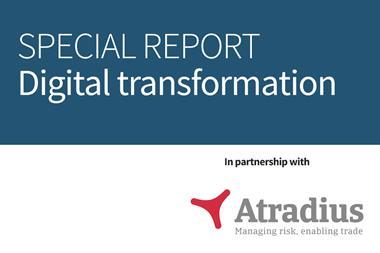The buoyant captive sector and the benefits a credit rating on a captive can achieve were described in yesterday's Conference Times.
Today Jose Sanchez-Crespo of AM Best outlines the methodology used to analyse captive insurers.
Is there a special rating scale for captives?
No. All AM Best's financial strength ratings are presented in the same scale and the analysis on which our opinion is based will be consistent whatever the type of insurer concerned. But we do recognise that captives are different from conventional insurers, for instance in their objectives and their methods of operation.
We need to understand the risk management strategy that a captive is intended to serve. With this in mind, last year we published AM Best's rating methodology for single parent captives. What is important is that, as a transparent and consistent market based comparison, a rating allows a captive to be seen in this wider context.
What are the main factors that determine the rating?
We focus on three main areas: balance sheet strength (including capital, reserves, reinsurance and investments); operating performance and business profile. We also analyse the company's strategy and the experience of its management team. A key analytical tool is AM Best's capital adequacy ratio, a proprietary model that identifies an insurer's risk-adjusted capital needs. It is important that we assess the real creditworthiness of the captive, which may not always be evident in its financial statements. For example, where there are equalisation reserves, where there is a very cautious claims reserving policy or where capital, although not paid up, is supported by letters of credit, the effective equity will be recognised. Conversely, if we were concerned about reserve adequacy we would reduce the reported equity levels accordingly.
What information is required to undertake this analysis?
All our captive ratings are fully interactive. The rating process entails the sharing of information about the captive's underwriting, capital structure, investments etc. Typically, sizeable amounts of non-public information are shared. This information is, of course, treated in the strictest confidence by AM Best. The details of this information would generally be consistent with what a well-run captive uses in its own management process. A fundamental part of the rating process is the management meeting at which AM Best's analysts discuss this information from a strategic viewpoint with those who control or influence the captive's operations. This may include outside directors, brokers and other advisors, and treasury and risk management personnel from the parent.
How does the status of the parent affect that of the captive?
The rating is assigned to the captive, not its parent and is specific to the captive's ability to meet its ongoing policyholder obligations. A crucial factor is the regulatory controls associated with maintenance of capital in the captive. The parental relationship is an important consideration, but not a completely overriding one.
How long does the rating process take?
To a large extent this is in the hands of the captive. Supplying the requested information and convening the management meeting with all desired attendees can take time. Once that meeting has been held we would expect the rating to be assigned within six to eight weeks.
How do captive ratings compare with the market in general?
Overall this is a better picture than the market as a whole, though the percentage of captives in the superior range (where size is more material) is lower. Also, in the past 18 months, when most insurers have been suffering, proportionally fewer captives have been downgraded. This is as one might expect; many captives are conservatively capitalised for the risks they are retaining, and typically the rationale for captive usage means those risks are of a higher quality than those offered to conventional insurers. It is also worth noting that most captives have had a lower exposure to distressed equity markets.
Jose Sanchez-Crespo is general manager, AM Best Europe

















